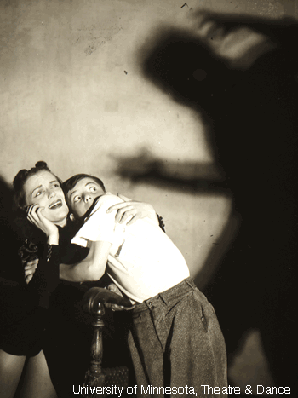Mixed Metaphors to Live By, or A Thank You to the Good Drs. Lakoff and Johnson
Human beings are not built to withstand the pressure produced when steam is trapped within a sealed vessel, and we stretch only so far when our limbs are pulled in opposite directions. Despite the metaphors we too often live by pre-tenure, I have not met a single junior colleague whose contract requires him or her to undergo the extreme physical duress of a pressure cooker or the Rack. Nevertheless, the precision with which a tenure-stream contract seemingly divides one person’s efforts (e.g. 40% teaching, 40 % research, 20% service) within an inflexible time frame (e.g. first probationary period: three years; second probationary period: three years) has given many of us cause to mix metaphors. I get it. I also know that these metaphors, even for those of us with macabre tastes, only amplify the anxiety that accompanies uncertainty.
I am not writing this from the Promised Land where elephants captain cumulous pirate ships cross a cobalt sky, whilst the breeze carries the scent of just-peeled oranges past my sun-kissed cheek, standing in a field of black-eyed Susans, sipping the sweet Nothing-I-have-to-do. Please. Puh-leeze. First of all, I live in Michigan and it is January. Almost as significantly, I am in my fourth year of a tenure-stream appointment, fifteen months away from compiling my tenure file. I have not been awarded tenure. I do not know if I will be awarded tenure. So I cannot advise how to get tenure and win friends. And I will not advise that you find work-life balance, or take time out for yourself, or do the things you love. Advice like that suggests that your work is somehow not a part of your life and not for you. Instead, I offer three principles that I find helpful. Please take what is useful and leave the rest.
Do not do the math. My GRE test scores should have taught me this lesson; I gently remind myself of it often. The story is the problem: Over 72 months, pre-tenure faculty member “A” will teach 24 threeish-credit courses; serve on at least 1 graduate committee, 1 departmental committee, 1 university committee, and 1 professional committee for each 12-month period within these 72 months; “A” must attend at least Y conferences, and write at least X articles and 1 book. If teaching is worth Q%, research is worth R%, and service is worth S%, how many hours per day should she devote to each in order to earn an “Excellent” rating in all categories? And why does “A’s” calculator display “S#*T” after she hits “=”? As faculty, we have an enviable amount of control over how we structure time. Instead of thinking about how much time things take, I think about good times. The morning is a good time for me to write; the evening is good for me to read; the hour before class is good to create a lesson plan. You can follow the seasons or imagine endless Happy Hours; just do things when it is good to do them.
Become people deep. To do this, you must be generous with your time, regardless of how you choose to conceptualize it. The Michigan State University faculty, who welcomed me to campus with invitations to do stuff, taught me this lesson. It comes in two parts. When I arrived at MSU, I was invited to become affiliate faculty in multiple programs, invited to give a talk, and invited to collaborate on a civic engagement project. I did exactly the opposite of what, I heard, junior faculty should do. I said “yes” to (almost) everything. And rather than saying “no,” when invited to give that talk, I said “I cannot at this time, but would like to [fill in future date].” First, these projects did not take time away from what I “should” have been doing. This is because integration does not require serendipity. I thought about how to fit each request into something that I was already doing; I thought about why I was invited. Second, the exchange rate on generosity is greater than 1:1. Those people to whom I have been generous not only contribute to my projects when I ask. They think of me. In doing so, they give me unsolicited support of all sorts. They volunteer introductions to other people, vouch for me, email citations and CFPs, and just check-in to see what I am up to. You do not need to say “yes” to everything to become a part of the community, but if you keep your office door open, helpful people will stop by.
Keep your sense of humor, but do not keep it to yourself. I finally learned that being serious is not necessary to being taken seriously. Oscar Wilde and Ron Swanson taught me this lesson. Lazzi, linguistic inversions, impersonations, and one-liners do not abound in Ivory Tower interactions. For me, not making dumb jokes is self-censorship. It does not feel right, and it is exhausting. Initially, I worried that colleagues and students would not get that I was an expert in my field unless I strode stern-faced into rooms to profess. I am not suggesting that all junior faculty should go for the laugh. Some people are just not funny. What I am suggesting is that you should let colleagues and students know you.
By way of conclusion, I’ll say that it is folly to conclude before finished. Instead, for the next year or so, I am going to institute the Magic “If” and play Gwendolyn Fairfax: “This suspense is terrible. I hope it will last.”

